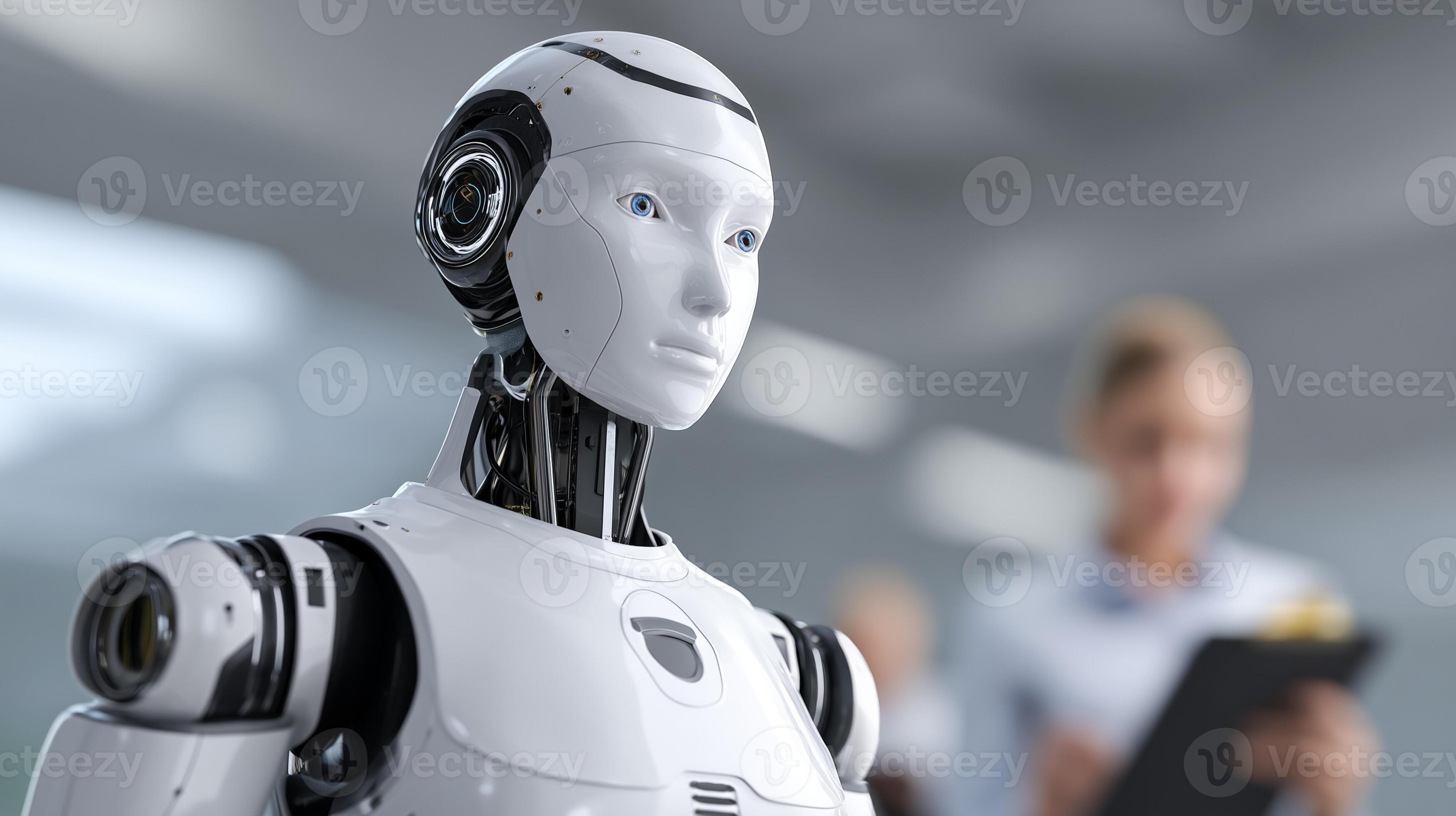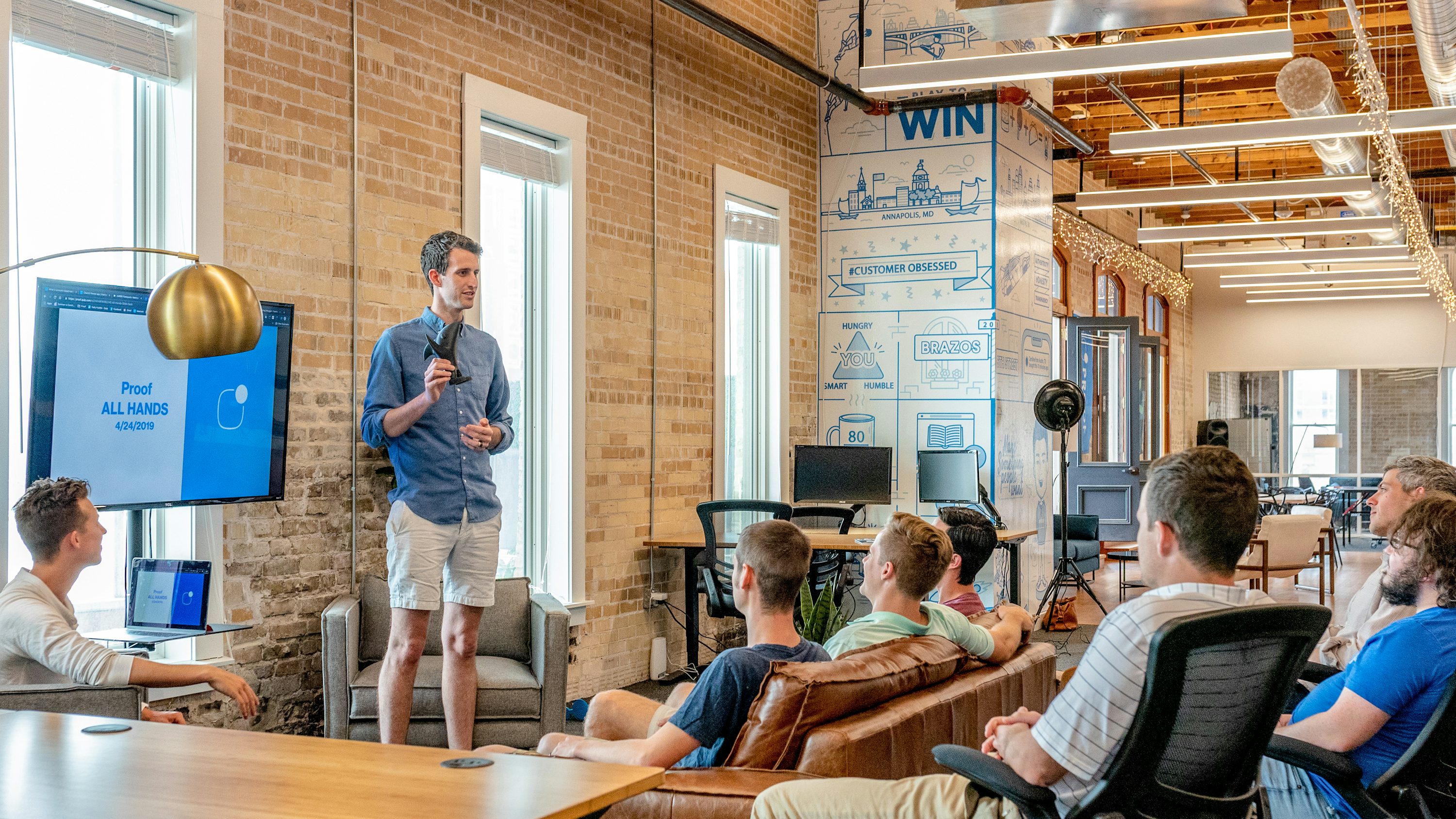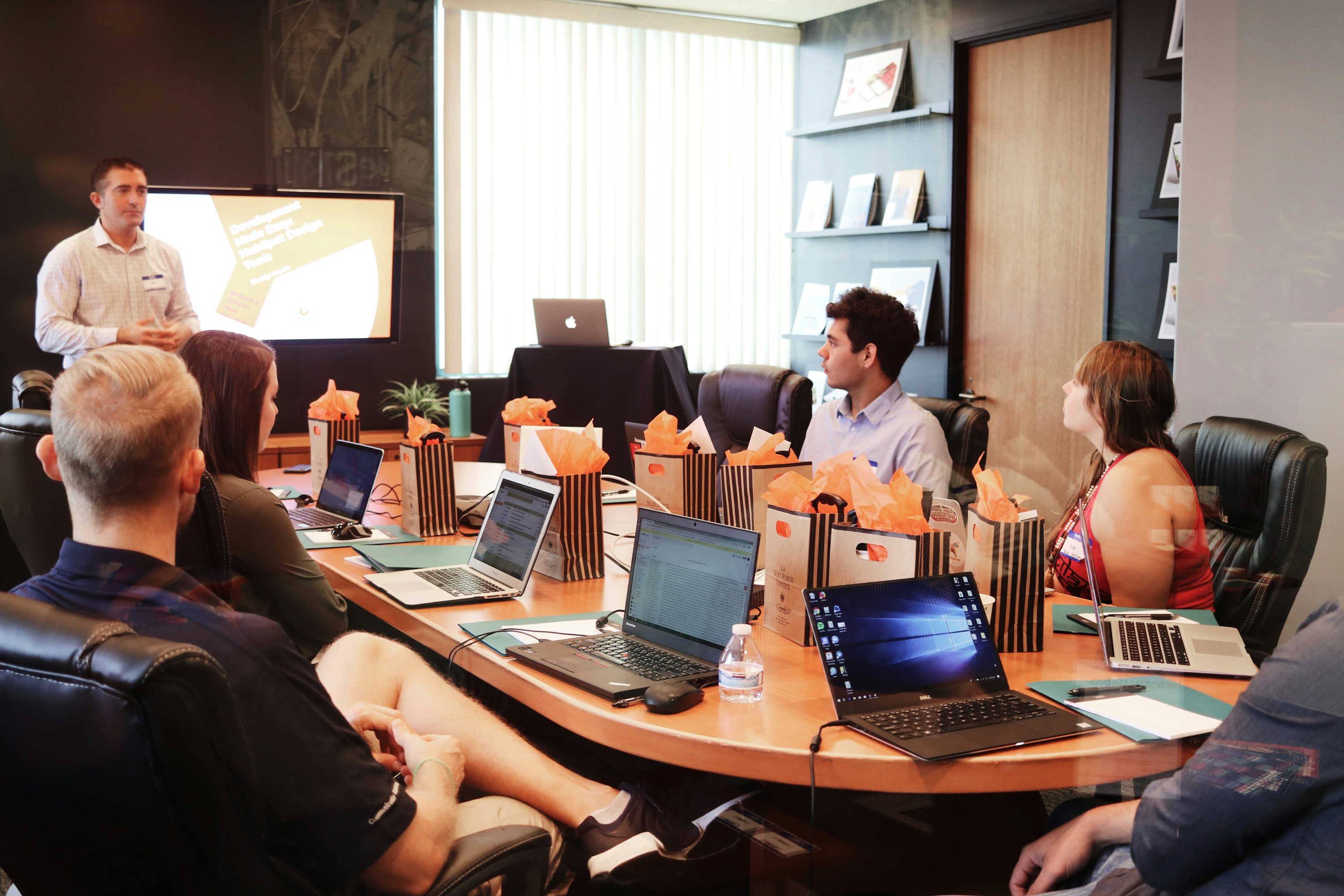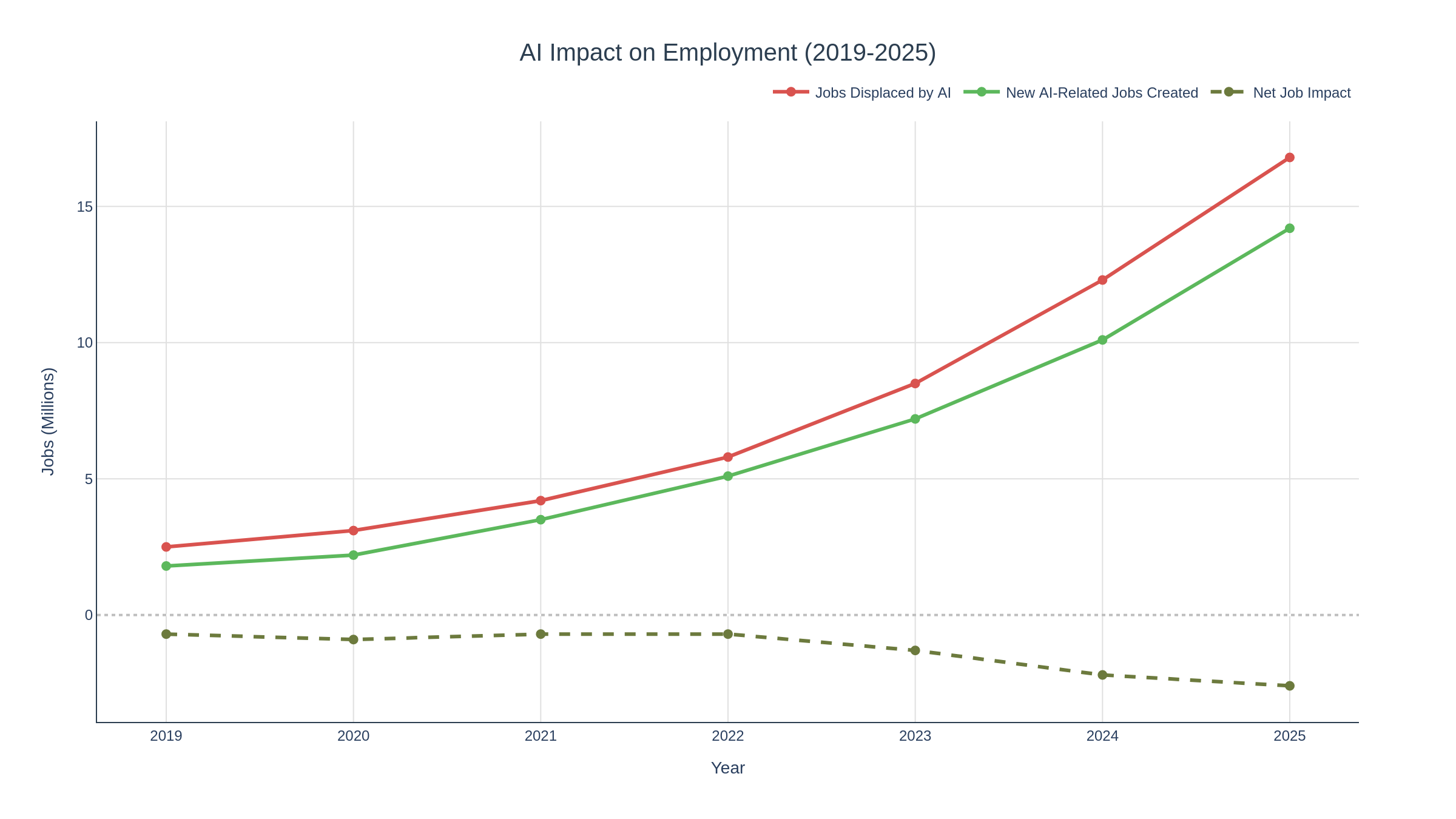
The AI Layoff Wave: Why Major Corporations Are Cutting Jobs at Record Pace
Over 77,000 tech workers lost their jobs in the first seven months of 2025 alone, with AI explicitly cited as a driver. From Microsoft to Goldman Sachs, major corporations are implementing unprecedented workforce reductions. Examining the scale, impact, and human cost of AI-driven job displacement.
The AI Layoff Wave: Why Major Corporations Are Cutting Jobs at Record Pace
The corporate world is experiencing an unprecedented shift as artificial intelligence transforms from a productivity tool into a workforce replacement at scale. In the first seven months of 2025 alone, over 77,000 tech workers lost their jobs—approximately 491 layoffs every day—with AI explicitly cited as a primary driver in thousands of these cuts. This isn't just about automation replacing factory workers or routine data entry, as previous technological waves did. Today's AI systems are eliminating positions that were considered safe just years ago: software engineers, financial analysts, customer service professionals, HR specialists, and even entry-level positions that traditionally served as career entry points. When Klarna's CEO announced a 40% workforce reduction enabled by AI, or when Salesforce cut 4,000 customer support roles because AI handles most inquiries, or when IBM reduced its HR department from 700 employees to 50 through automation, a clear message emerged: the nature of white-collar work is fundamentally changing.
The scale and speed of this transformation are staggering. Goldman Sachs projects that AI could disrupt 300 million jobs worldwide by 2030. McKinsey estimates that up to 30% of work hours in the U.S. economy could be automated by the same timeframe, requiring nearly 12 million Americans to change occupational categories entirely. The International Labour Organization reports that one in four jobs globally faces potential transformation or elimination from generative AI. These aren't distant projections—they're unfolding in real-time across industries, from Silicon Valley tech giants to Wall Street financial institutions to customer service centers worldwide.
This article examines the AI layoff wave sweeping through corporate America and beyond: the data behind the headlines, which industries and job categories face the greatest risk, what's driving companies to make these cuts, how workers and economies are responding, and what this transformation means for the future of work. Understanding these dynamics is crucial for workers navigating career decisions, companies planning workforce strategies, investors evaluating corporate performance, and policymakers grappling with economic disruption.
By the Numbers: Quantifying the Job Displacement Crisis
The statistics on AI-related job losses are sobering and accelerating. In 2024, approximately 238,000 tech workers lost jobs across 1,115 companies—an average of 653 people every single day. The pace intensified in 2025: by mid-year, 130,981 tech workers had been laid off across 434 events, a 36% increase from the comparable 2024 period. July 2025 alone saw a 140% spike in layoffs, with 10,375 explicitly attributed to AI implementation and another 20,219 linked to "technological updates"—corporate euphemisms often masking AI-driven workforce reductions.
 Major corporations are implementing unprecedented workforce reductions driven by AI automation
Major corporations are implementing unprecedented workforce reductions driven by AI automation
Beyond tech, the broader U.S. economy experienced over 806,000 layoffs in the first seven months of 2025, with more than 10,000 directly linked to AI. These numbers likely undercount the true impact—many companies avoid explicitly mentioning AI in layoff announcements, instead citing "restructuring," "efficiency initiatives," or "strategic realignment." Research from consulting firm Challenger, Gray & Christmas suggests actual AI-related cuts could be 3-5 times higher than officially reported figures indicate.
Industry-specific analyses reveal even starker projections. Bloomberg Intelligence forecasts that 200,000 global banking jobs could disappear within 3-5 years due to AI, representing approximately 3% of the sector's workforce. A survey of 93 major banks found nearly a quarter expect workforce reductions of 5-10% from AI automation. In customer service, where AI chatbots and virtual agents now handle 80% of routine interactions, analysts project up to 3 million American jobs could vanish this decade. In manufacturing, where automation has already eliminated 1.7 million positions since 2000, projections suggest another 20 million jobs globally could be lost by 2030 as AI-powered robotics become more sophisticated and economical.
The employment data shows troubling trends even beyond outright layoffs. Entry-level job postings have dropped 15% since 2022 in AI-exposed fields as companies hire fewer people for roles increasingly performed by automation. Meanwhile, job descriptions mentioning AI skills have surged 400%, and postings requiring AI expertise pay 25% more on average—nearly $18,000 additional annual salary—creating a stark divide between those who can work with AI and those whose work AI replaces.
Perhaps most concerning is the acceleration. The World Economic Forum projects that 92 million jobs could be displaced by AI by 2030—but simultaneously forecasts 170 million new jobs created, yielding a net gain of 78 million positions. However, this "net positive" headline obscures a harsh reality: the displaced workers often don't qualify for the newly created positions, which typically require advanced technical skills. As McKinsey notes, nearly 12 million Americans will need to change occupational categories entirely, and 39% of workers' core skills will become obsolete by 2030. The issue isn't just job quantity but the massive disruption and displacement as one set of jobs disappears while an entirely different set emerges.
Who's Cutting and Why: The Corporate Perspective
The list of companies implementing AI-driven workforce reductions reads like a who's who of corporate America and global business. Understanding their motivations reveals the economic forces driving this transformation.
Technology Giants Leading the Charge: Ironically, the companies creating AI tools are among the most aggressive at using them to reduce headcount. Microsoft eliminated over 15,000 positions in 2025, with CEO Satya Nadella explicitly linking cuts to productivity gains from AI tools like GitHub Copilot, which now generates 30% of the company's code. Google reduced its workforce from 190,000+ in 2022 to 182,000 by 2023, with further cuts in 2024 as AI generates over 25% of new code and machine learning optimizations reduce operational costs by 90% per search query. Meta, Amazon, Intel, and virtually every major tech company has implemented significant reductions while simultaneously investing billions in AI development.
The logic is straightforward: AI companies understand the technology's capabilities better than anyone and recognize opportunities to apply it internally. As Nadella noted in an earnings call: "We're committed to leveraging AI to improve productivity across our organization, which means some roles will evolve or become redundant." This isn't cynicism but rather the inevitable logic of companies seeking competitive advantage through the very technologies they develop.
IBM's Transformation: IBM's experience illustrates AI's potential to reshape corporate functions. The company cut 8,000-9,000 employees in 2024-2025, primarily in HR, accounting, marketing, and communications—the "back-office, white-collar work" CEO Arvind Krishna identified as most automation-susceptible. IBM's HR department shrank from 700 employees to 50, with an AI chatbot called "AskHR" now answering 94% of employee questions instantly. The remaining HR professionals focus on complex strategic issues, employee development, and handling exceptions the AI can't resolve. Krishna frames this as "augmentation rather than replacement," but the 650 eliminated positions tell a different story.
Financial Services Embrace Efficiency: Banks and financial institutions face intense pressure from shareholders to improve efficiency ratios (the percentage of revenue consumed by expenses) and are deploying AI aggressively. JPMorgan Chase projects at least 10% reductions in operations and support staff over five years as AI handles routine work. CEO Jamie Dimon acknowledged, "Yes, AI will lead to layoffs," while emphasizing retraining programs for affected employees. The bank's third-quarter 2024 results showed 12% profit growth with only 1% headcount increase—a stark illustration of AI-driven productivity gains.
Goldman Sachs eliminated 1,300-1,800 positions in 2024, with CEO David Solomon announcing plans to "constrain headcount growth" and implement "limited reductions" as AI capabilities expand. The firm is deploying AI across client onboarding, regulatory reporting, and research analysis—functions previously requiring armies of junior analysts and back-office staff. Bank of America's CEO Brian Moynihan noted AI is "shrinking some departments" while enabling employees to focus on higher-value client interactions. The consistent theme: AI enables revenue maintenance or growth with fewer people.
Klarna's Cautionary Tale: Swedish fintech company Klarna implemented perhaps the most aggressive AI-driven workforce reduction, shrinking from approximately 5,000 to 3,000 employees—a 40% cut—primarily through a hiring freeze and natural attrition as AI replaced customer service agents. The company's AI chatbot now handles two-thirds of customer inquiries, equivalent to the work of 700 human agents. CEO Sebastian Siemiatkowski proclaimed, "AI can already do all of the jobs that we, as humans, do," and suggested AI job replacement might trigger economic recession.
However, Klarna's experience also illustrates potential pitfalls. After the initial cuts, the company experienced service quality degradation and customer satisfaction declines as the AI struggled with complex or nuanced situations. Siemiatkowski later admitted the approach "went too far" and the company subsequently rehired some positions, recognizing that optimal performance requires human-AI collaboration rather than wholesale replacement. This lesson—that aggressive automation can backfire—hasn't prevented other companies from attempting similar transformations, though hopefully with more balanced approaches.
Salesforce's Hybrid Model: Salesforce cut 4,000 customer support positions (from 9,000 to 5,000 employees) as AI now handles 50-85% of customer interactions, delivering 17% cost reductions. CEO Marc Benioff stated bluntly, "I need less heads," while emphasizing that AI "doesn't have a soul" and can't fully replace human judgment and empathy. Significantly, while cutting support roles, Salesforce simultaneously hired 3,000-5,000 new sales staff, illustrating how AI reshapes rather than simply reduces workforces. The company is redeploying hundreds of affected support employees to sales, professional services, and customer success roles—a template other organizations are attempting to follow with varying success.
The Executive Narrative: Corporate leaders consistently frame AI-driven cuts through several lenses: competitiveness (must adopt AI to remain competitive), efficiency (reducing costs to invest in growth), productivity (achieving more with fewer people), and evolution (jobs transforming rather than disappearing). Walmart CEO Doug McMillon captured the prevailing view: "AI is literally going to change every job. No role is immune." Nvidia CEO Jensen Huang, whose company powers much of the AI revolution, noted, "You're going to lose your job to someone who uses AI," emphasizing that AI literacy becomes essential for all workers.
 AI and automation systems are increasingly capable of performing tasks previously requiring human judgment
AI and automation systems are increasingly capable of performing tasks previously requiring human judgment
What's driving these decisions beyond technological capability? Several forces converge: shareholder pressure for improved margins and earnings growth, competitive dynamics as early AI adopters gain cost advantages, the availability of venture capital and private equity rewarding companies demonstrating AI leverage, and genuine capability improvements making automation feasible for increasingly complex tasks. Companies that resist face questions from investors about why they're not capturing AI-driven efficiencies their competitors are achieving. This creates powerful momentum toward workforce reduction regardless of individual leaders' preferences or values.
Which Jobs Face the Greatest Risk: The Vulnerability Landscape
Not all positions face equal AI displacement risk. Understanding the vulnerability landscape helps workers assess personal exposure and companies identify which roles to prioritize for automation or protection.
Administrative and Clerical Positions (Extremely High Risk): Data entry clerks face potentially 95% automation rates as AI can process structured information faster and more accurately than humans. The 12.8 million Americans working in office and administrative support face significant displacement risk. HR administrative roles, accounting and bookkeeping positions, scheduling coordinators, and similar functions involve routine tasks with clear rules—ideal candidates for AI automation. IBM's reduction of its HR department from 700 to 50 employees illustrates the scale of potential impact.
Customer Service Representatives (Very High Risk): With 80% of customer interactions expected to be handled by AI chatbots by 2025, the 3 million Americans working in customer service face substantial risk. Klarna's replacement of 700 agents with a single AI system demonstrates the economics driving this shift. AI handles routine inquiries effectively—password resets, order status, basic troubleshooting—while struggling with complex emotional situations or nuanced problem-solving. The result: fewer customer service positions overall, with remaining roles focused on complex escalations and relationship management.
Entry-Level White-Collar Positions (Very High Risk): Perhaps most concerning is AI's impact on traditional career entry points. Entry-level positions in fields exposed to AI have declined 13% since 2022 as companies automate or eliminate these roles. Junior financial analysts, paralegal positions, junior software developers, content writers, and research assistants—roles that historically served as training grounds where young professionals developed skills and advanced—increasingly disappear. Anthropic CEO Dario Amodei warned of a "white-collar bloodbath" with potentially half of entry-level positions eliminated within 1-5 years.
This creates a troubling paradox: if entry-level positions vanish, how do workers gain experience for mid-level roles? Some companies are attempting "apprenticeship" models where junior employees work alongside AI systems, but the economic logic often favors eliminating the position entirely. Younger workers (ages 18-24) report being 129% more likely to worry about job obsolescence than older workers, reflecting their direct exposure to this phenomenon.
Software Developers and Engineers (High to Moderate Risk): Even technology creators face AI competition. AI tools like GitHub Copilot, which generates 30% of Microsoft's code, demonstrate that software development itself isn't immune. However, the impact is nuanced: AI excels at routine coding tasks, boilerplate generation, debugging assistance, and documentation—but struggles with system architecture, complex algorithm design, and understanding business context. The result isn't wholesale developer elimination but rather changing roles toward AI-augmented development where fewer engineers produce more output. Junior developers face higher risk than senior architects, and routine development work becomes less valuable as AI capabilities expand.
Financial Analysts and Accountants (High Risk): Basic financial operations face 70% automation potential by 2025. Credit analysts, in particular, see projected job declines of 3.9% as AI systems analyze creditworthiness more quickly and consistently than humans. Routine accounting tasks—reconciliations, expense reporting, basic financial statement preparation—are increasingly automated. However, complex financial judgment, strategic planning, and client relationship management remain primarily human domains. The profession is shifting toward strategic advisory roles while routine number-crunching disappears.
Content Writers and Creators (Moderate to High Risk): Approximately 81.6% of marketers express concern about AI replacing content creation roles. AI generates acceptable initial drafts for many content types, handles basic product descriptions and routine reports effectively, and can even create personalized variations at scale. However, AI-generated content often lacks originality, struggles with complex technical topics, and can't match human creativity for strategic storytelling or brand voice development. The emerging model involves AI handling routine content while humans focus on strategy, editing, and high-value creative work—but this shift means fewer total positions.
Healthcare and Education (Lower Risk with Transformation): While Bill Gates predicts AI will replace many doctors and teachers within a decade, making expertise "free and commonplace," the reality appears more complex. AI excels at medical diagnostic assistance—analyzing images, identifying patterns in data, suggesting potential diagnoses—but struggles with patient communication, ethical decision-making, and integrating complex contextual factors. Medical transcription faces 99% automation potential, and administrative healthcare roles are highly vulnerable, but direct patient care positions appear relatively protected. Similarly, AI tutoring systems can personalize instruction and provide immediate feedback, but the holistic educational role—mentorship, social-emotional learning, classroom management—remains primarily human.
Skilled Trades and Hands-On Work (Lower Risk): Electricians, plumbers, HVAC technicians, landscapers, and similar roles requiring physical presence, manual dexterity, adaptation to unpredictable environments, and contextual judgment remain largely protected from AI displacement. Landscaping and groundskeeping occupations actually show 3.5% projected growth. While robotics continues advancing, the economic and technical barriers to automating most skilled trades remain substantial. Paradoxically, these positions—often undervalued compared to white-collar work—demonstrate greater AI resilience than many office jobs.
Management and Leadership (Lower Risk with Transformation): Executive and senior management roles requiring complex decision-making, strategic thinking, stakeholder management, and navigating ambiguity face lower immediate displacement risk. However, AI dramatically changes management work: junior managers overseeing routine processes become less necessary as AI handles those processes, middle managers spend less time gathering and analyzing information (AI provides this), and span of control increases as AI enables managers to oversee more people and processes. The result: fewer total management positions but transformed rather than eliminated roles for those remaining.
 Workforce reskilling and adaptation programs are becoming critical as AI transforms job requirements
Workforce reskilling and adaptation programs are becoming critical as AI transforms job requirements
The common thread among high-risk positions: routine work with clear rules, tasks that can be decomposed into logical steps, activities primarily involving information processing rather than physical presence, and roles with clear performance metrics AI can optimize toward. Conversely, lower-risk positions involve complex human interaction and emotional intelligence, adaptation to unpredictable environments, creative problem-solving, and holistic judgment integrating many contextual factors. Understanding where positions fall on this spectrum helps workers and organizations navigate the transformation.
The Human Cost: Worker Impacts and Social Disruption
Behind the statistics and corporate rationales lie profound human impacts as millions of workers face job loss, career disruption, and economic uncertainty. Understanding these effects is crucial for developing effective responses and avoiding social crisis.
Economic Hardship and Displacement: When a 45-year-old customer service representative with 20 years of experience loses their job to an AI chatbot, the personal impact extends far beyond employment statistics. Many displaced workers face: immediate income loss with limited severance, difficulty finding comparable replacement positions as automation spreads across their field, potential forced career changes into unfamiliar domains, wage declines of 33-47% for workers in heavily automated occupations (per MIT research), and retirement savings disruption as forced early withdrawals or reduced contributions derail long-term plans.
The International Labour Organization notes particular vulnerability among certain demographic groups. Women face nearly three times the displacement risk as men in high-income countries, with 9.6% of female employment in high-exposure roles compared to 3.5% for males. This disparity reflects women's overrepresentation in administrative, clerical, and customer service positions—exactly the roles most susceptible to AI automation. The gender wage gap, already problematic, risks widening as women disproportionately face displacement while AI-skilled technical roles (where men predominate) command premium wages.
Mental Health and Anxiety: Beyond economic impacts, AI-driven job insecurity creates psychological toll. Approximately 32% of U.S. workers report fearing AI will reduce their job opportunities, according to multiple surveys. Younger workers experience this anxiety most acutely—those aged 18-24 are 129% more likely to worry about job obsolescence than older workers. The uncertainty of not knowing whether your position will exist in five years, combined with confusion about what skills will remain valuable, creates chronic stress affecting both job performance and overall well-being.
Workers describe feeling betrayed after years of loyalty to employers who eliminate positions for cost savings, inadequate to compete against AI systems that never tire and continuously improve, and uncertain about how to prepare for a future where career paths seem unpredictable. These psychological impacts receive less attention than economic effects but profoundly affect millions navigating this transition.
The Skills Gap Crisis: Perhaps the greatest challenge is the mismatch between skills workers possess and skills the AI-era economy demands. The World Economic Forum reports that 39% of workers' core skills will change by 2030, requiring massive retraining. However, effective reskilling faces numerous barriers: high costs (averaging £31,800 per employee in finance sectors), rapid obsolescence (skills learned today may become outdated before training completes), accessibility challenges (workers with limited resources can't afford expensive programs), lack of clarity (difficulty predicting which skills will remain valuable), and non-random selection bias (workers most needing retraining often least likely to access it).
Moreover, workers often retrain into occupations similarly vulnerable to automation. A customer service representative who retrains as a data entry clerk simply shifts from one high-risk position to another. Effective reskilling requires identifying roles with genuine long-term resilience—often requiring fundamental career changes rather than incremental skill additions.
Geographic and Community Impacts: Job displacement concentrates geographically, devastating entire communities. When a customer service center employing 2,000 people automates away 1,500 positions, the impact ripples through the local economy: reduced consumer spending affects retailers and services, lower tax revenues strain municipal budgets, declining property values affect homeowners' wealth, and out-migration drains communities of working-age residents. Cities and regions economically dependent on industries facing automation—call centers, basic financial services, routine manufacturing—face existential challenges.
High-income countries face higher exposure rates (34% of employment) compared to low-income countries (11%), but less-developed economies have fewer resources for managing transitions, suggesting globally uneven impacts. Within the U.S., some regions and demographic groups face concentrated displacement while others experience growth, exacerbating existing inequality and political tensions.
The Social Contract Question: At a deeper level, AI-driven job displacement raises fundamental questions about the social contract. If automation enables corporations to generate equivalent or greater output with far fewer workers, how should productivity gains be distributed? Should displaced workers share in AI-driven profits through universal basic income or similar mechanisms? Do companies have obligations to workers whose positions become automated beyond minimum legal requirements? These aren't merely philosophical questions—they're practical policy challenges that will shape whether AI transformation proves broadly beneficial or concentrates gains among capital holders while devastating working populations.
Klarna CEO Sebastian Siemiatkowski warned that AI job replacement could trigger economic recession if displaced workers can't find new employment or if consumer spending crashes as incomes disappear. This isn't inevitable—productivity gains could fuel economic growth creating new opportunities—but it's also not automatic. The distribution of AI benefits and the effectiveness of transition support will determine whether this transformation proves economically inclusive or socially destabilizing.
Adaptation and Response: Reskilling, Policy, and the Path Forward
While the challenges are substantial, various stakeholders are attempting responses aimed at managing the transition and mitigating negative impacts. Effectiveness varies considerably.
Corporate Reskilling Initiatives: Some companies are investing significantly in retraining affected workers rather than simply laying them off. Amazon's Machine Learning University provides employees with data science training, IBM's SkillsBuild offers free AI training programs, Unilever invested $77 million in employee training and development, Salesforce is redeploying hundreds of former customer support employees to sales and professional services roles, and Ericsson has maintained reskilling efforts since 2018 focused on AI and automation.
 Corporate reskilling programs aim to help workers transition to new roles in the AI economy
Corporate reskilling programs aim to help workers transition to new roles in the AI economy
These programs vary in effectiveness. Success factors include genuine commitment from leadership (not just public relations), sufficient resources for meaningful training, clear pathways to actual positions (not just generic skills), integration into career development frameworks, and employee agency in choosing development directions. However, even well-designed programs face challenges: the rapid pace of AI advancement creates "moving targets" where skills become outdated quickly, and the economic logic often favors hiring new AI-skilled workers rather than extensively retraining existing employees.
The World Economic Forum reports that 77% of employers plan to focus on reskilling by 2030, and 85% should prioritize upskilling their workforce. However, only 9% of organizations are actively mitigating workforce displacement risks currently, suggesting a concerning gap between stated intentions and actual preparation.
Government and Policy Responses: Policymakers are beginning to grapple with AI workforce impacts, though responses remain limited relative to the challenge's scale.
At the federal level in the U.S., the Senate AI Working Group released a Bipartisan AI Roadmap in May 2024 endorsing the Workforce Data for Analyzing and Tracking Automation Act, which authorizes the Bureau of Labor Statistics to systematically monitor automation's employment effects. The AI and Critical Technology Workforce Framework Act (April 2025) directs the National Institute of Standards and Technology to create workforce frameworks defining AI-related jobs and necessary skills. Senator Bernie Sanders released a report warning AI could eliminate nearly 100 million U.S. jobs over a decade and proposed policy solutions including shorter workweeks and enhanced worker protections.
However, comprehensive federal legislation addressing displacement, retraining funding, social safety net adjustments, or income support remains absent. The political response lags substantially behind the technological and economic reality.
Some states are acting independently: California passed the Transparency in Frontier Artificial Intelligence Act in September 2025, addressing various AI governance issues including workforce impacts. However, tensions exist between federal desires to promote innovation (some federal spending bills included proposed 10-year bans on state and local AI regulations) and state-level efforts to protect workers and citizens. This fragmented approach creates regulatory uncertainty but also allows experimentation with different policy models.
International bodies like the International Labour Organization emphasize social dialogue to manage transitions, digital skills training, addressing digital divides, and worker involvement in AI implementation decisions. The European Union has various AI regulations addressing workforce impacts. However, globally, policy responses remain nascent relative to the disruption's scale and speed.
Skills and Strategies for Workers: For individuals navigating this landscape, several strategies emerge from research and successful adaptations: develop AI literacy and tool proficiency (as Nvidia CEO Jensen Huang noted, "You're going to lose your job to someone who uses AI"), focus on skills AI struggles with such as complex problem-solving, critical thinking, emotional intelligence, creativity, leadership, and adaptability. Pursue roles involving human interaction and relationship management, cultivate continuous learning mindsets rather than assuming static skill sets, consider fields with structural barriers to automation like skilled trades or healthcare, and develop cross-functional capabilities spanning multiple domains.
Workers with AI skills earn approximately 25% more on average—nearly $18,000 additional annual salary—and job postings requiring AI expertise surged 800% since 2022 in non-tech sectors. The demand for AI-adjacent skills extends far beyond technology companies into healthcare, finance, manufacturing, and virtually every industry. The message: learning to work effectively with AI provides substantial protection and opportunity.
However, this advice risks being incomplete for workers whose positions face imminent elimination. A 50-year-old data entry clerk can't easily become an AI engineer, regardless of training availability. For many, adaptation means fundamental career changes—potentially into different industries or completely different work types. The social and economic support for managing these transitions remains inadequate.
The Long-term Vision: Looking ahead, several possible futures emerge. The "optimistic scenario" envisions AI handling routine work while humans focus on creative, strategic, and interpersonal activities. Productivity gains fuel economic growth creating abundant new opportunities. Workers successfully reskill into emerging roles, and policy interventions ensure broad benefit distribution. The "pessimistic scenario" involves massive displacement with insufficient job creation, concentrated AI benefits among capital holders, inadequate transition support creating long-term unemployment, social instability from economic disruption, and inequality reaching crisis levels.
The actual outcome likely falls somewhere between these extremes and depends heavily on choices made now. Anthropic CEO Dario Amodei, after warning of a "white-collar bloodbath," noted, "We, as the producers of this technology, have a duty and an obligation to be honest about what is coming." That honesty, combined with proactive responses from corporations, policymakers, and individuals, offers the best path toward managing this transformation.
 Employment statistics reveal accelerating AI impact with jobs displaced outpacing new jobs created in key sectors
Employment statistics reveal accelerating AI impact with jobs displaced outpacing new jobs created in key sectors
Conclusion: Navigating the Transformation
The AI layoff wave sweeping through corporations worldwide represents more than cyclical economic restructuring or routine technological change. It's a fundamental transformation of work itself—which tasks require human intelligence, how organizations structure themselves, what skills hold value, and how productivity gains are distributed. The statistics are clear: tens of thousands of workers have already lost jobs to AI, with projections suggesting millions more will follow by the end of this decade.
For workers, the imperative is adaptation—developing AI literacy, focusing on uniquely human capabilities, embracing continuous learning, and recognizing that career stability requires evolution rather than stasis. For companies, the challenge is navigating the tension between competitive pressure to adopt AI (and the cost savings it enables) and the responsibility to manage workforce transitions humanely and effectively. For policymakers, the question is whether existing social safety nets, education systems, and labor regulations suffice for this level of disruption, or whether more fundamental interventions—from retraining programs to universal basic income experiments—become necessary.
The technology enabling this transformation will continue advancing. AI capabilities that seem cutting-edge today will appear routine within years. The question isn't whether AI will transform work—that transformation is already underway—but whether we navigate it in ways that broadly distribute benefits or concentrate gains while devastating working populations. The decisions made in the next few years by corporate leaders, policymakers, and society will shape whether we look back on this era as one of broadly shared prosperity driven by productivity gains or as a period of destabilizing disruption that exacerbated inequality and human hardship.
The layoffs aren't merely statistics—they're individuals and families facing profound uncertainty about futures that seemed secure. Addressing this transformation with honesty, empathy, and action represents one of the defining challenges of our time.
References
- Bloomberg Intelligence. (2024). Global Banking Job Losses from AI: Projections and Analysis.
- Challenger, Gray & Christmas. (2023-2025). Monthly Job Cut Reports and AI Impact Analysis.
- Financial Times. (2024-2025). Corporate AI Adoption and Workforce Restructuring Coverage.
- Goldman Sachs Research. (2024). The Potentially Large Effects of Artificial Intelligence on Economic Growth.
- International Labour Organization. (2024). Generative AI and Jobs: A Global Analysis of Potential Effects on Job Quantity and Quality.
- McKinsey Global Institute. (2023-2024). Generative AI and the Future of Work in America.
- MIT Technology Review. (2024-2025). AI, Automation, and the Labor Market: Research and Analysis.
- PwC. (2024). CEO Survey: AI Impact on Workforce Planning and Headcount.
- The Wall Street Journal. (2024-2025). Corporate Earnings Coverage and Executive Statements on AI and Employment.
- Trueup.io. (2024-2025). Tech Layoff Tracker: Real-Time Data on Technology Sector Job Cuts.
- U.S. Bureau of Labor Statistics. (2023-2025). Employment Projections and Automation Impact Analysis.
- World Economic Forum. (2025). Future of Jobs Report 2025: AI, Automation, and Workforce Transformation.
Disclaimer: This analysis is for informational purposes only and does not constitute investment advice. Markets and competitive dynamics can change rapidly in the technology sector. Taggart is not a licensed financial advisor and does not claim to provide professional financial guidance. Readers should conduct their own research and consult with qualified financial professionals before making investment decisions.

Taggart Buie
Writer, Analyst, and Researcher